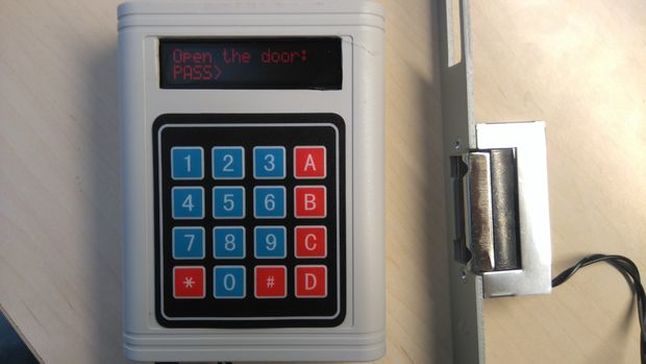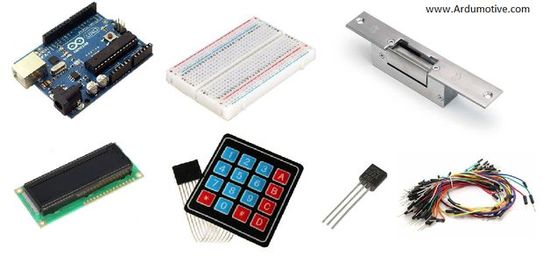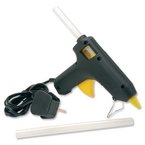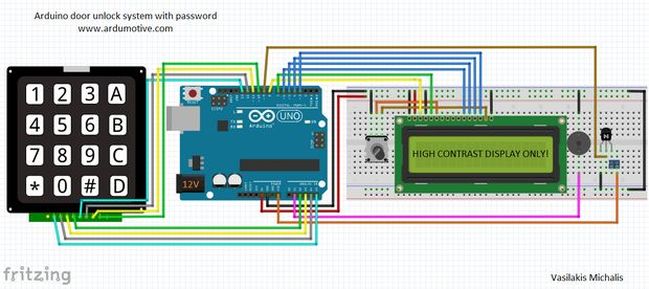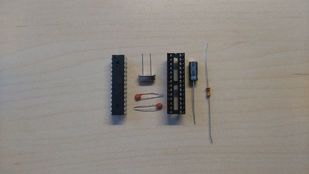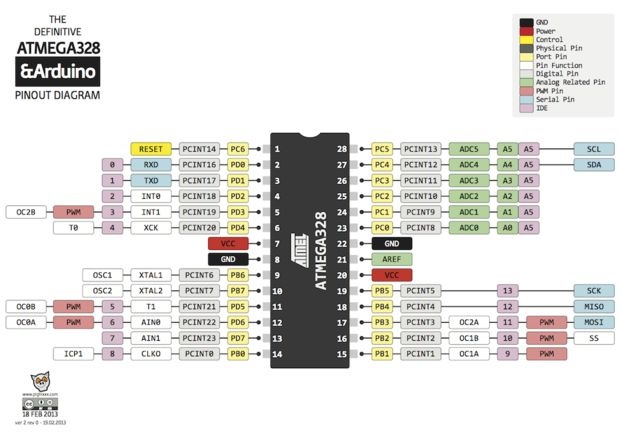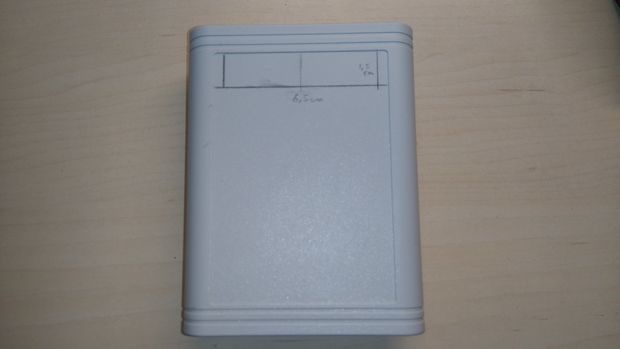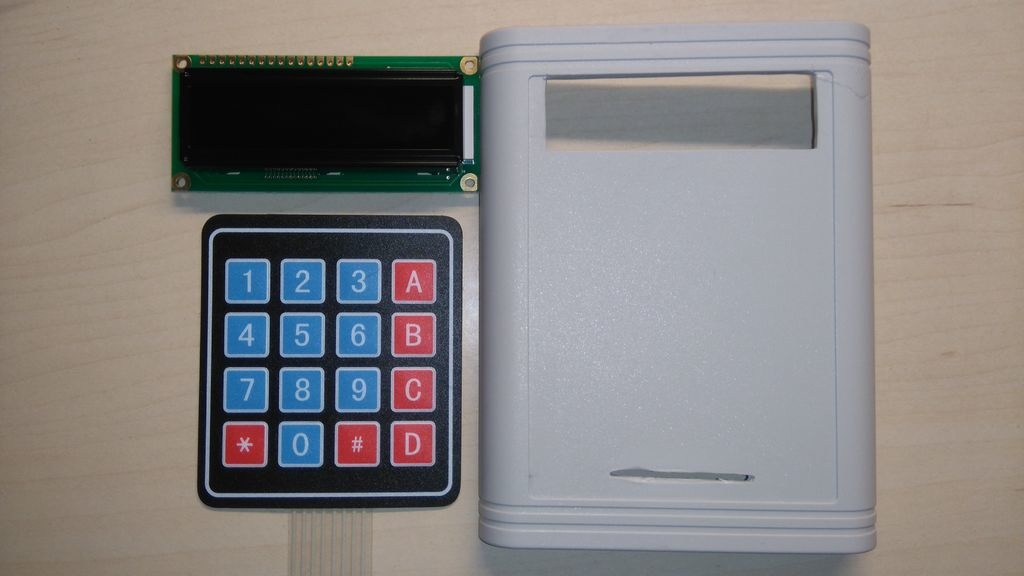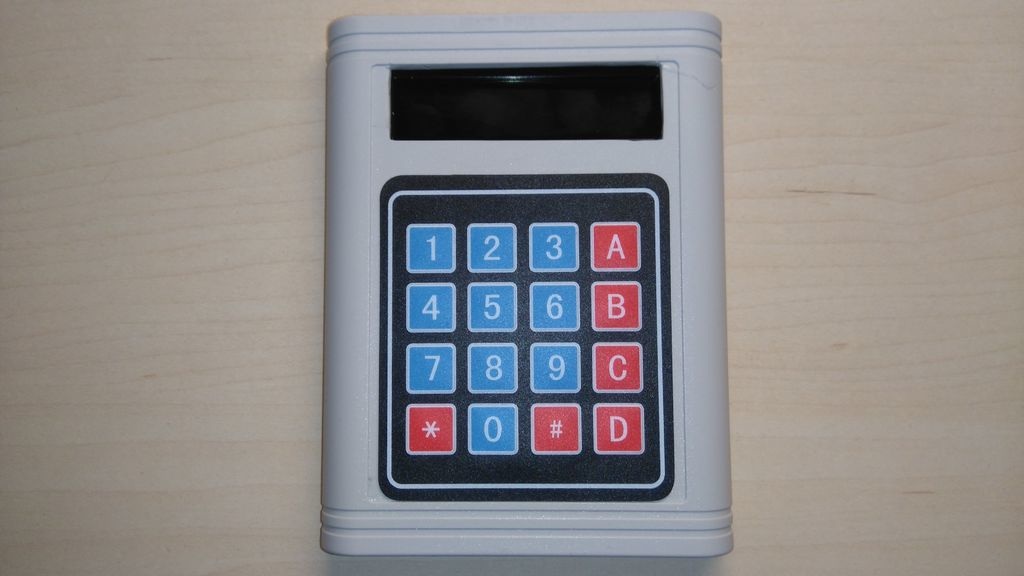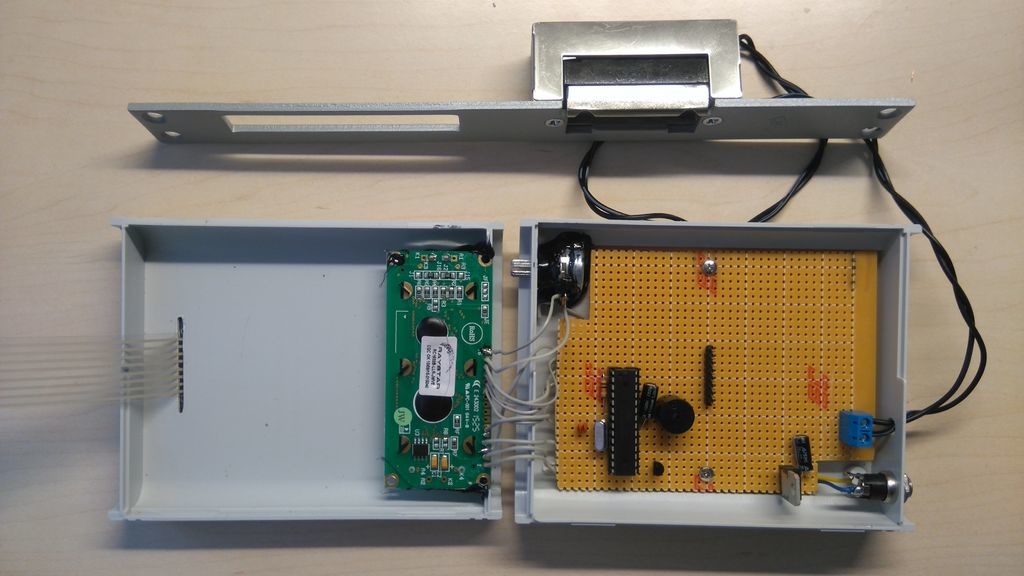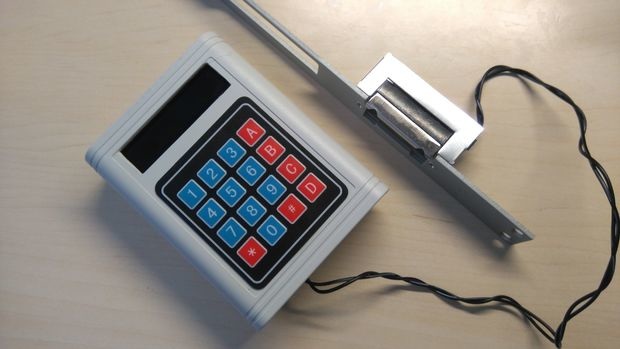Introduction |
Published date: 25/05/2016
|
Hello! In this guide I will show you how to make your own password unlock door system by using the Arduino uno board. I made my own circuit by using the ATmega328 micro controller but this is an optional step. In this guide I will help you to make it easily on breadboard by using the Arduino uno board, and I will give you some extra tips on how you can make your own Arduino-based custom circuit.
By using this system you will be able to unlock a door for 5 seconds. After 5 seconds the electrical door opener will be automatically be locked. You can unlock it by typing the correct password and pressing the '*' button. If you want to change the current password, you can do it by pressing the 'A' button and if you want to skip or abord an operation you can do it by pressing the '#' button. It also has a buzzer for making various tones during operation.
Watch the operation video:
By using this system you will be able to unlock a door for 5 seconds. After 5 seconds the electrical door opener will be automatically be locked. You can unlock it by typing the correct password and pressing the '*' button. If you want to change the current password, you can do it by pressing the 'A' button and if you want to skip or abord an operation you can do it by pressing the '#' button. It also has a buzzer for making various tones during operation.
Watch the operation video:
The electrical door opener that I used need 9 to 12V to operate. So for this system I used an 12V power adapter. As current passes through it, the electric lock remains open. Otherwise it remains closed.
This device was made only for educational and presentational purpose reasons, it can't be used in real life. If you want to use it on your home's door make sure that it's enough safe , for example use a metal box and put the power cables "inside the wall".
Let's get started!
This device was made only for educational and presentational purpose reasons, it can't be used in real life. If you want to use it on your home's door make sure that it's enough safe , for example use a metal box and put the power cables "inside the wall".
Let's get started!
What you will need - Hardware
|
For this project you will need:
|
|
(ONLY) If you want to make your own custom - Arduino based - circuit you willalso need:
- DIP socket for atmega328
- LM7805 Voltage regulator (5V output)
- 16Mhz crystal osc
- 2x 22pF ceramic, 2x 0.22uF electrolytic capacitors
- 1x 10K resistor
- DC power jack
- pcb prototyping board
The Circuit
The connections are pretty easy, see the above image with the breadboard circuit schematic.
|
High contrast LCD:
|
Keypad 4x4: From left to the right pin:
|
The Code
Here's the code, embedded using Codebender!
|
|
Try downloading the Codebender plugin and clicking on the "Run on Arduino" button to program your Arduino board with this sketch. And that's it, you've programmed your Arduino board directly from your browser! It's really amazing.
|
Tip: If you want to change the time that door remain unlocked change the delay(time) at line 105. Default password is "8520".
Make your own custom Arduino - based circuit
Now that you have successfully test your new project with the Arduino uno board, you can start making your own Arduino-based custom circuit! The procedure it's easy, but you will need some extras skills for making it.
So, I will try to give you some tips here to try it out by yourself:
So, I will try to give you some tips here to try it out by yourself:
- 10K resistor must be connected between 1st (reset) pin and 7th (Vcc) of the Atmega328 micro controller.
- 16MHz crystal oscillator must be connected at pins 9 and 10, labeled as XTAL1 and XTAL2
- Connect to each pin of oscillator one 22pF capacitor. The other pin of capacitors goes to pin 8 (GND) of micro controller.
- Remember to connect the second power line of the ATmega328 with your power source, pins 20-Vcc and 22-GND.
- All other information for the Arduino pinout can be found at the second image above.
- Use the LM7805 with two 0.22uF electrolytic capacitors (on input and output pins) to take 5V from your 12V power source. This is important! Do not provide more than 6V on your custom circuit!!! It will burn your Atmega micro controller and lcd circuit.
Put it in a box
|
Take your time and configure your box to fit your circuit.
You can make it as big (or small) you want. |
|



